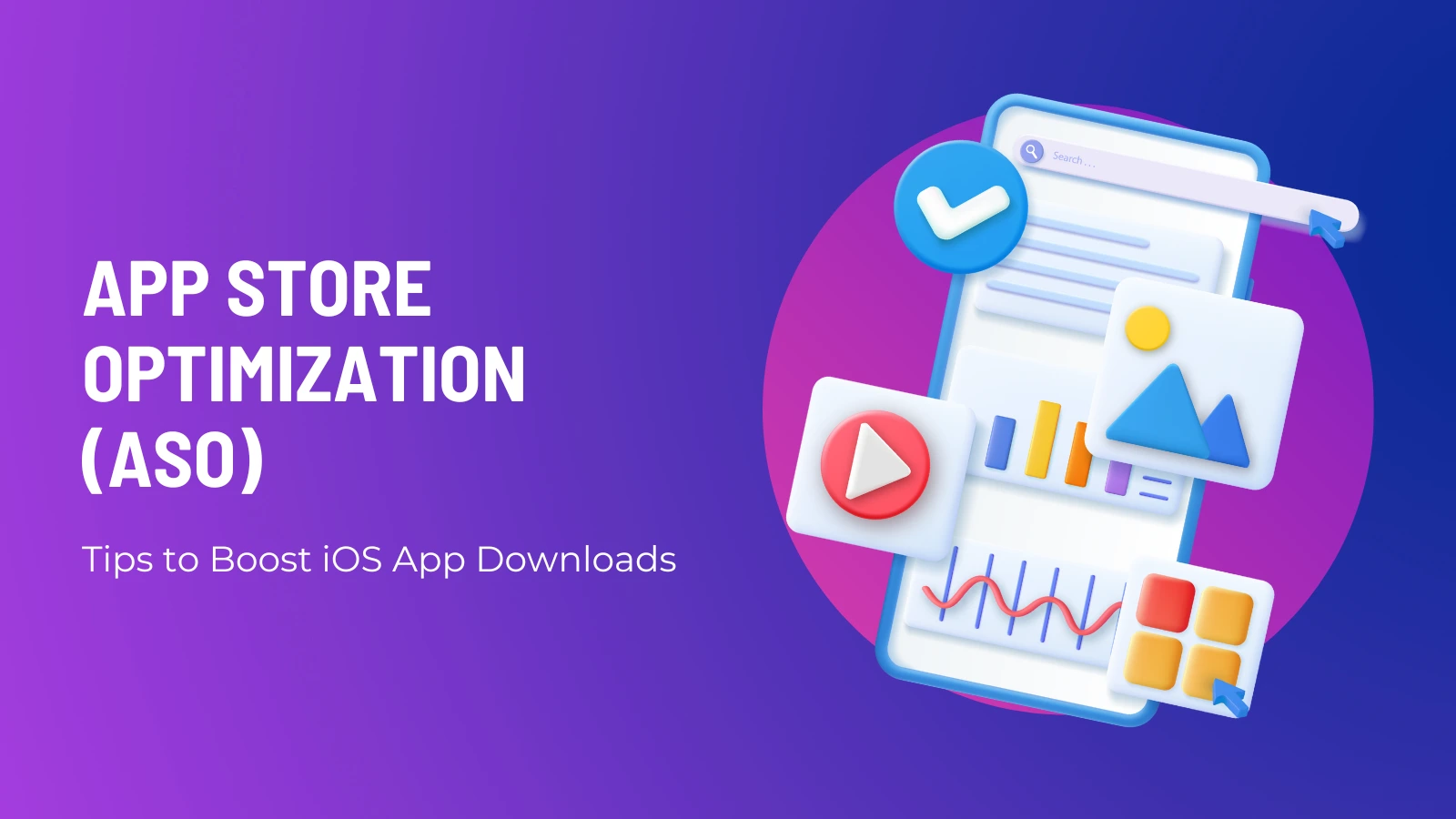May 01, 2025
What if your customers could shop your store from anywhere on the globe? What if your next boardroom meeting wasn't stuck on a flat screen, but took place in a virtual, fluid space where participants could interact with each other as naturally as they do in the real world?
This is not some fictional plot from a science fiction movie—it's the actual, fast-changing reality of the Metaverse.
The Metaverse is a fundamental change in how we engage with virtual worlds. In contrast to the usual web experiences that are two-dimensional in nature, the Metaverse is immersive, interactive, and always-on. It's a virtual world where users don't just look at content—they are a part of it.
At the center of this change are two revolutionary technologies: Virtual Reality (VR) and Augmented Reality (AR). These technologies are being utilized as the portal to a new type of internet, with experiences that are more immersive and realistic than ever.
AR, VR, and the Metaverse: Understanding
Let's dispense with the mystique before we talk about the business applications. AR VR app development services are sometimes lumped together, but they are used for different purposes and provide different user experiences.
What is Augmented Reality (AR)?
Augmented Reality enhances the real world by projecting digital content—image, sound, or information—over real-world environments. AR doesn't replace your surroundings; it enhances them. Consider the now-widespread Pokémon Go game or Snapchat filters putting digital animation on your face or environment. Consumer uses like IKEA Place enable consumers to see how furniture would look in their living room, mixing digital content with the real world without a hitch.
What is Virtual Reality (VR)?
Virtual Reality is an all-encompassing experience that transports users into an entirely virtual space. Wearing a VR headgear such as Meta Quest or HTC Vive, you lose all sense of your actual world. You are instead situated in a virtual one which may be a training room or an imaginary realm. VR finds extensive application in simulations, games, education, and increasingly corporate training spaces.
What is the Metaverse?
Metaverse is a pervasive, social, virtual reality that fuses the physical and virtual world. Here, the users interact with each other and virtual objects in real-time using avatars. It is powered by a fusion of technologies like AR, VR, AI, blockchain, and spatial computing.
Briefly stated, while the internet is a two-dimensional map, the Metaverse is a sphere. It is not one platform but a convergence of various virtual worlds where immersive experiences are the default. In this world, AR and VR are the eyes and hands that enable users and businesses to interact with digital worlds naturally and immersively.
Well beyond gaming, though, these technologies are revolutionizing the way that individuals communicate, learn, consume, and labor.
Why Companies Should Listen
We stand at the precipice of business-to-customer interaction paradigm change. Digitalization is no longer a question of having a website or an application; it is a question of providing experiences that are interactive, memorable, and emotional.
Today's consumers—Generation Z and Generation Alpha—are growing up with interactive digital worlds as the norm. They attend concerts at Fortnite, build communities at Roblox, and reside in virtual campuses for education. They are not passive digital consumers; they are active participants in immersive ecosystems.
For businesses, this shift is a huge opportunity.
First, it involves reaching consumers where they are—at immersive, more natural, and engaging places. Second, it provides first-mover benefit in customer engagement, brand differentiation, and digital innovation. Third, there is a huge monetary benefit. McKinsey estimates conservatively that the Metaverse has the potential to generate as much as five trillion dollars of value in 2030. The markets for AR and VR will grow exponentially, and Statista has estimated the worldwide AR VR app development services market to cross more than 450 billion dollars by the same year.
Short answer: Those who embrace immersive technology today will chart the future company world.
AR/VR in Business: Real-World Applications Across Industries
AR and VR are not limited to specialized technology markets or gaming. They are being used to apply to business operations in multiple industries. Here's how:
E-commerce and Retailing
AR and VR are changing consumer shopping. Retailers like Sephora, Lenskart, and Warby Parker have virtual try-on features that allow customers to view how products would appear before they buy them. This removes doubt and allows for the highest level of confidence in online buying.
Nike's entry into the Metaverse with "Nikeland" on Roblox is an example. It attracted millions of consumers who interacted with the brand in the form of games and virtual goods, blurring entertainment and marketing.
Architecture and Real Estate
Virtual reality-led virtual tours of property are now the norm in property sales. Potential future owners can view various properties from remote locations. Architecture companies also utilize VR and AR to supply 3D building models, where clients can view buildings in real time.
Healthcare
In medical practice, VR finds application in pain treatment, physical rehabilitation, and psychiatric therapy. AR is assisting doctors by overlaying virtual information on a patient in the operating room. Practicing complex procedures is safer and more efficient with VR simulations.
Education and Training
AR and VR changed the way people learned as they made learning immersive. Surgeons rehearse surgery virtually, and businesses such as Walmart use VR to train employees for actual incidents, from customer service to emergency procedures. Virtual classrooms have started to gain popularity as they can facilitate more interaction than standard video conferencing.
Marketing and Advertisement
Brands are using AR to build engaging interactive campaigns that enchant people. Pepsi's AR-powered bus stop in London replicated the spectacle of flying saucers and alien invasions that attracted millions of web views and a lot of buzz.
Virtual experiences are also utilized for experiential marketing. Car manufacturers like Hyundai offer virtual test drives in fully simulated environments.
Events and Cooperation
Companies are holding virtual trade shows and expos in the Metaverse. They mirror the discovery and networking aspects of live events, but with no cost of travel.
These businesses are also implementing platforms such as Spatial, Mozilla Hubs, and Meta's Horizon Workrooms for in-house collaboration, shared virtual spaces which improve productivity and bonding between distant teams.
Benefits to Businesses
The business uses of AR and VR, when combined, have several strategic benefits over raw novelty.
Global Reach Without Physical Expansion
By means of virtual stores or events, businesses can target customers geographically without the need to be physically located in each geography. This reduces overhead while distributing market potential.
More Customer Involvement
Immersive experiences create deeper emotional connections. If customers can connect with a brand in a memorable and significant manner, loyalty is increased.
Increased Product Visualization
One of the largest issues with online shopping is that you cannot touch or try the products. AR overcomes this by allowing customers to see products in their own real-world environment, not just enhancing satisfaction but also lowering return rates.
Data-Driven Insights
AR and VR technologies enable tracking of user activities at high levels of detail—e.g., gaze time, hotspots of interaction, and patterns of motion—and offer rich insights into customer behavior and patterns of decision-making.
Brand Storytelling and Loyalty
In the Metaverse, your brand is not a logo—but an experience. This allows firms to share their stories in more interactive and participatory ways, turning users into ambassadors and participators.
Challenges and Limitations
While the potential of AR VR app development services in commerce is enormous, one must proceed with caution to record the challenges.
High Development Costs
Creating immersive experiences is an expensive proposition in terms of talent and technology, and in creating content. Immersive environments, 3D assets, and cross-platform support don't come cheap.
Hardware Dependency
VR is often only available to take using dedicated headsets, something that not all individuals can afford. AR, while more widespread via the phone, depends upon high-spec phones and apps, limiting its reach.
User Learning Curve
Not all users are tech-literate, and some are intimidated by the process of moving around virtual environments. Businesses need to design interfaces that are intuitive and consider onboarding.
Privacy and Security Matters
With immersive technology collecting vast amounts of data—biometric feedback, audio, and location—there are genuine concerns about data privacy and ethics. Compliant, secure experiences are essential.
The Road Ahead: How to Get Started
For businesses ready to venture into this market, the process should not be intimidating. Below are steps to get started:
Start with Small AR Features Utilize platforms like Snapchat, Instagram, or Spark AR to create branded filters and try-on features. They are low-cost entry points that can create very high engagement. Integrate Existing Metaverse Platforms Instead of building your own virtual universe, start by building a branded space within mass-market platforms like Roblox, Decentraland, or Spatial. The platforms already have a pre-existing audience and means to support your experience. Collaborate with Experts Collaborate with AR/VR app development services or startups that can help bring your vision to life. This allows you to experiment without bearing the full development burden internally. Train Your Staff Educate your marketing, product, and tech teams on what immersive technologies can do. Conduct internal webinars or workshops to get in sync with your strategy. Stay Current on Web3 and Beyond The Metaverse is also being constructed by digital identity systems, blockchain, and NFTs. Knowledge about these will put companies in good stead for the next generation of the internet. Above all else, approach this as an odyssey. Pilot, test, learn, repeat. The trick is to grow together with your users and not lose out in an immersive world by default.
Conclusion:
Business Beyond the Screen The Metaverse isn't some hypothetical concept for tomorrow—it's a daily reality already transforming businesses. VR and AR aren't amenities for businesses to consider anymore; they're business tools. By adopting immersive technologies, companies can enrich customer experience, expand digital reach, and future-proof the business. It is not technology—it is experiences, connections, and value creation in a digital-first economy. The business environment is no longer website- or geographically bound. It is moving into spaces where customers can discover, engage, and build long-term relationships with brands in new and different ways. The question isn't whether your company can join the Metaverse—it's whether you can afford not to.
Elevate your business—launch a powerful app today!
More Blogs
App Store Optimization (ASO) Tips to Boost iOS & Android App Downloads
The process of increasing your program's exposure and download volume in the Apple program Store is known as app store optimization, or ASO. By customizing the right keywords, metadata, and user interaction metrics, ASO, like Search En...
How AI is Powering the Future of Robotaxis & Machine Learning Algorithms Behind Autonomous Driving Systems
Robotaxis are fast becoming a science fiction dream turned reality, revolutionizing the way individuals move around cities. Robotaxis—autonomous vehicles that can transport people without the need for drivers—is revolutioni...
The Future is Now: Top 5 Innovations Using Artificial Intelligence in Healthcare
The care industry AI or artificial intelligence has brought a neoteric twist in the field of diagnosis. Consequently, it has significantly increased the speed and precision of the diagnostic process that used to be rather slow and boor...

 Awards & Recognition
Awards & Recognition







